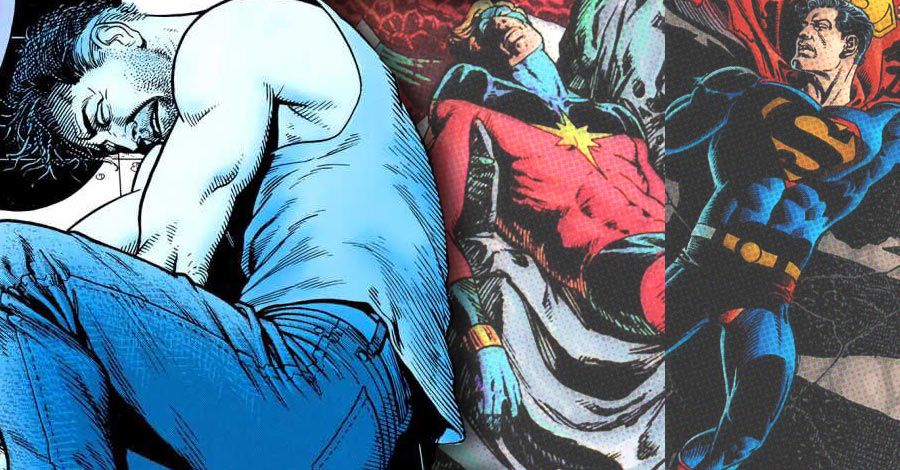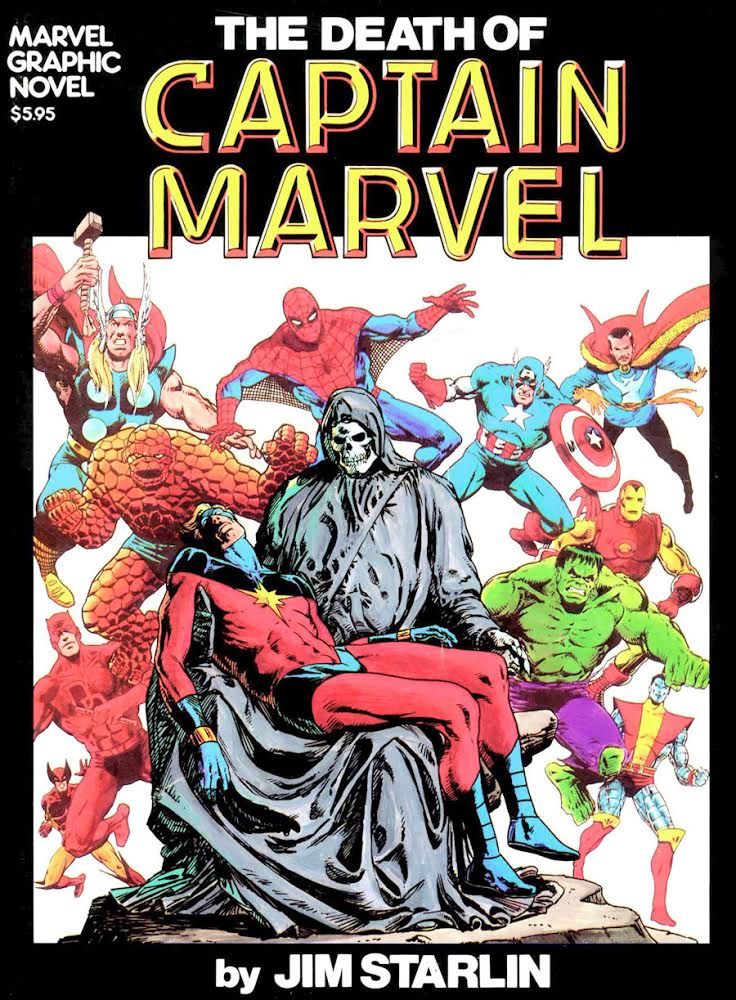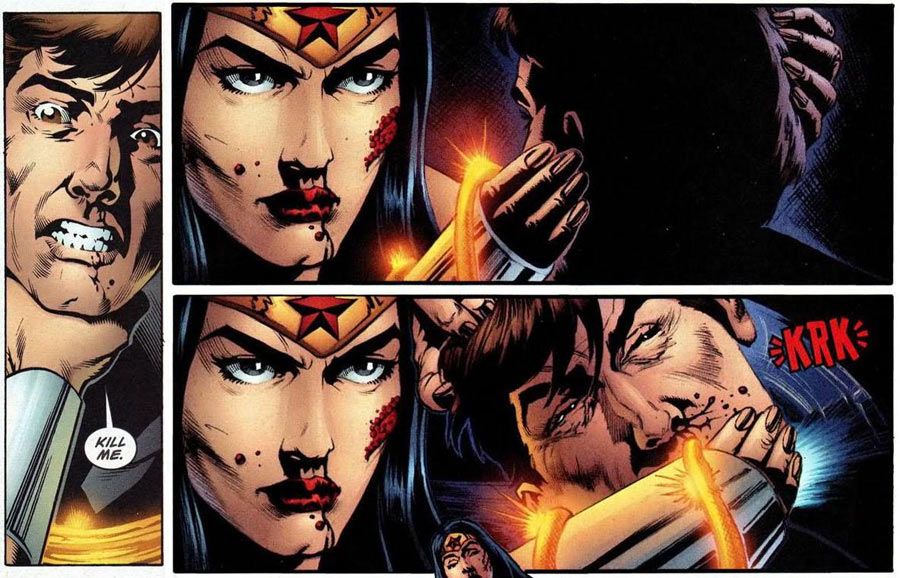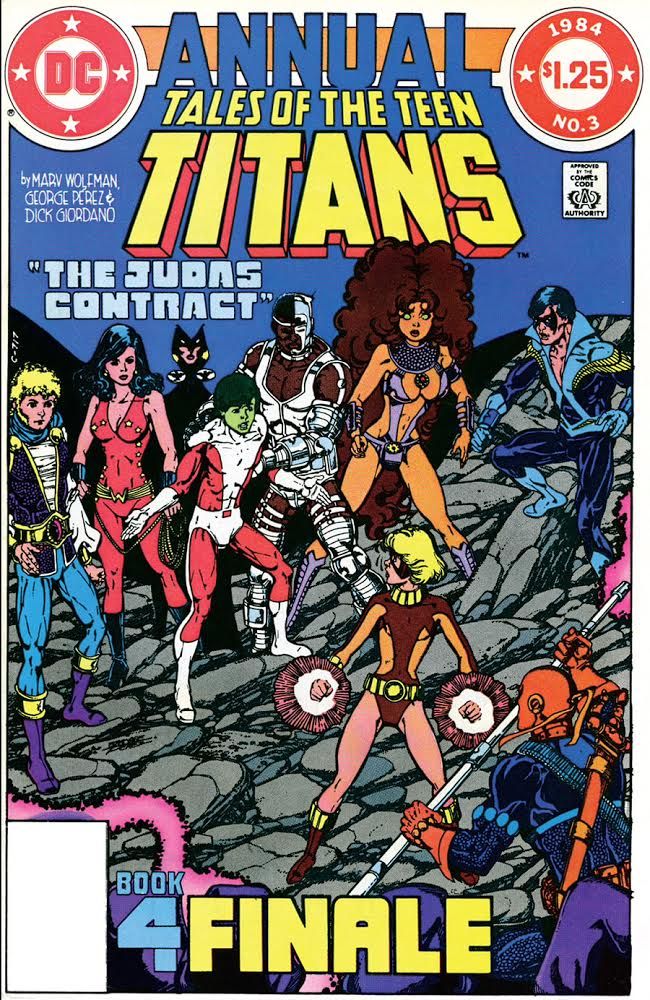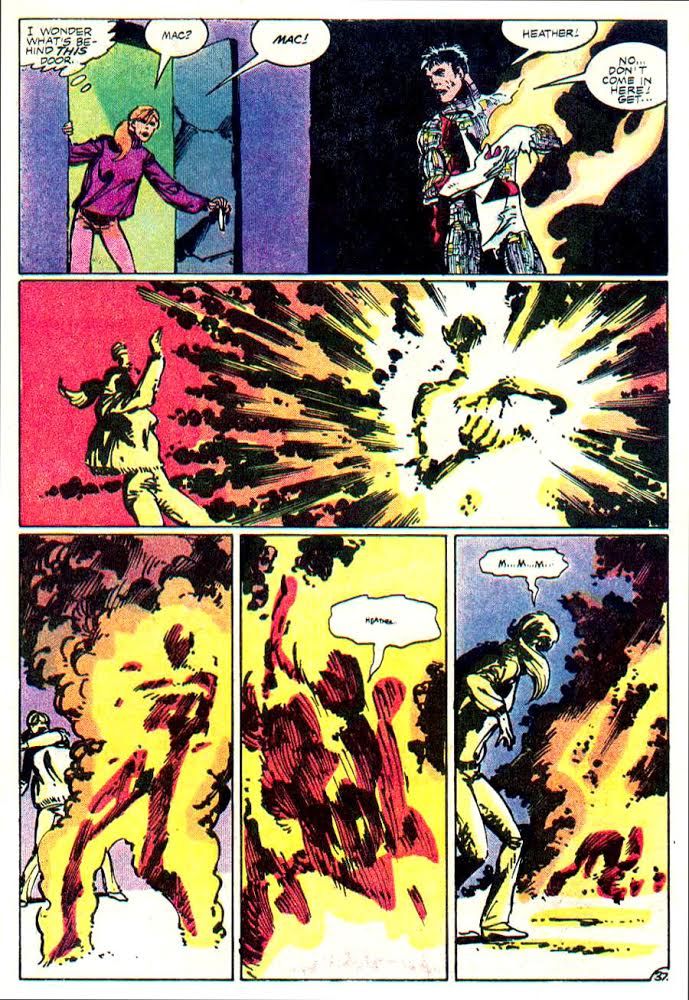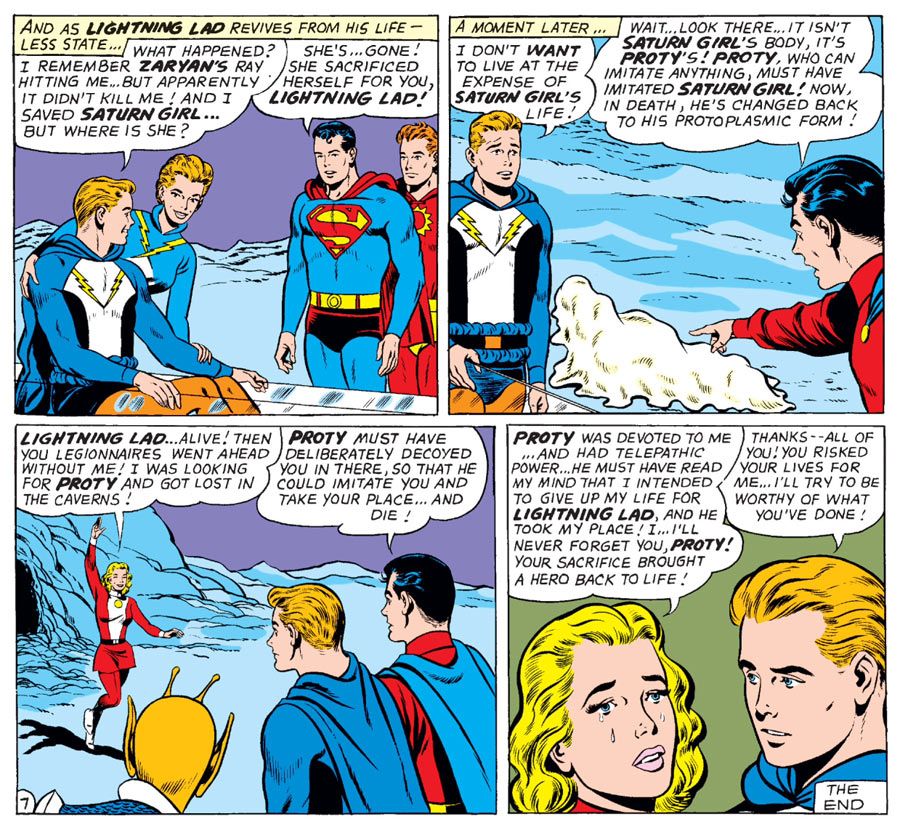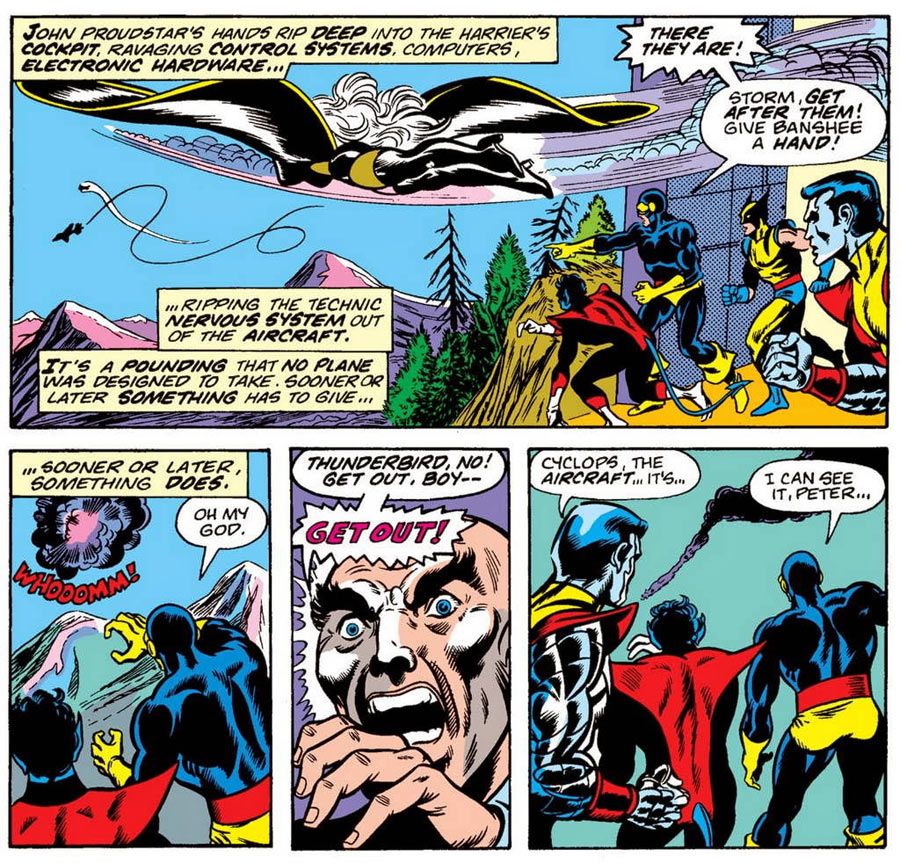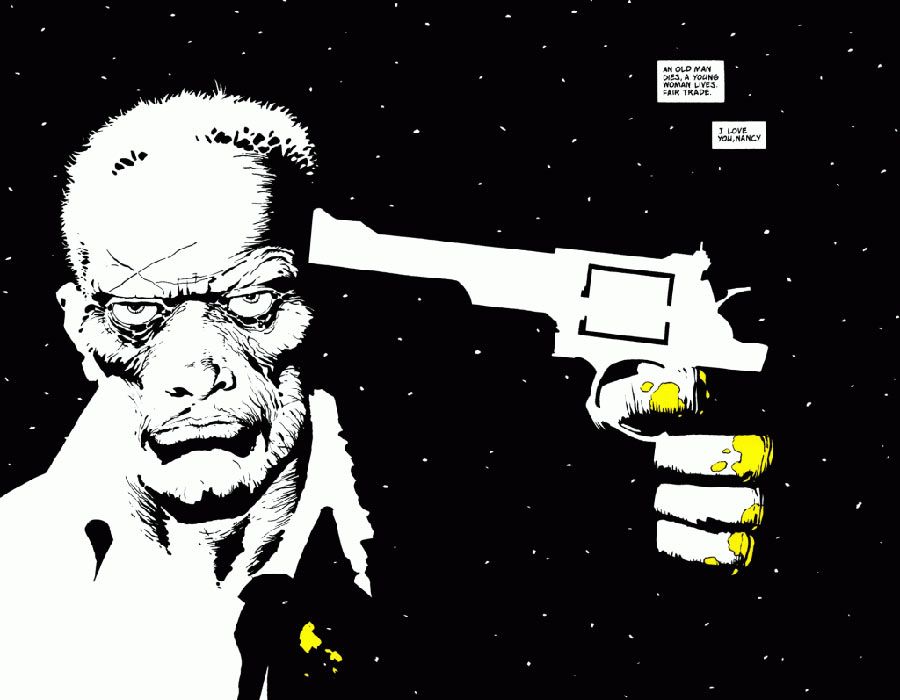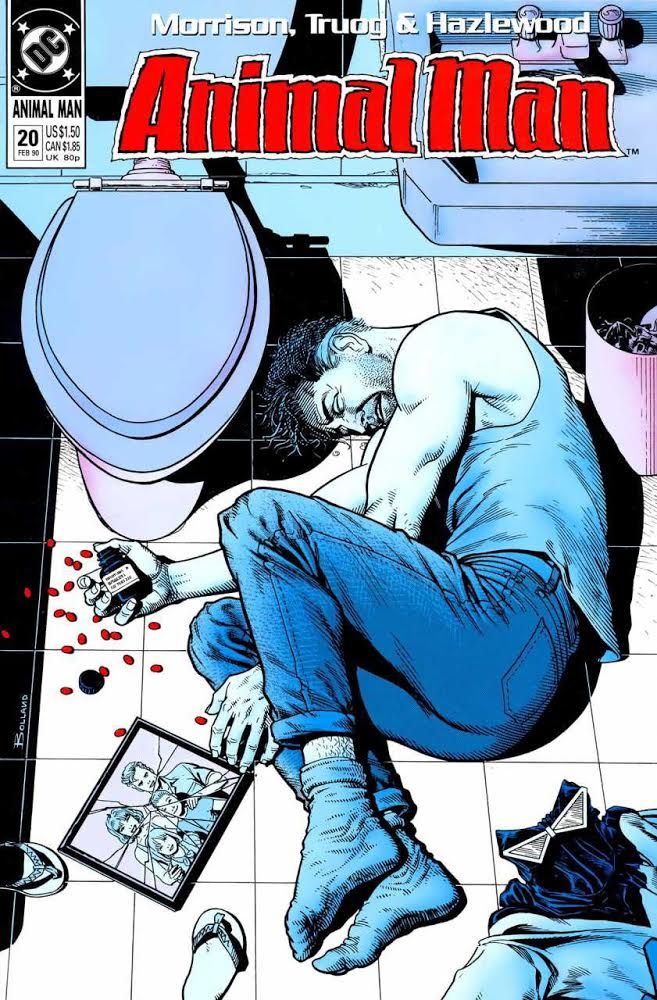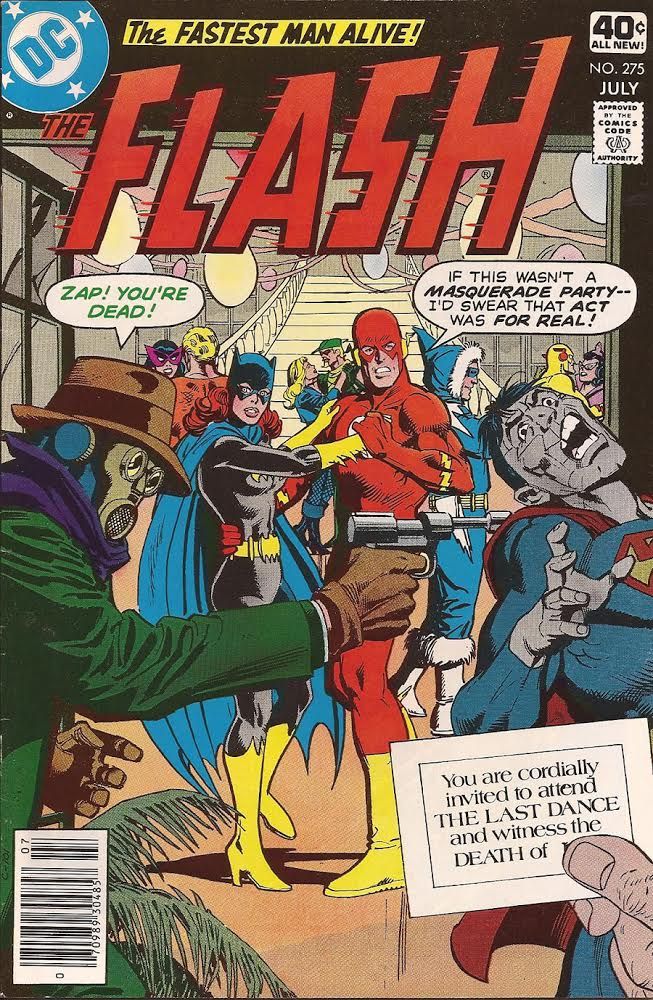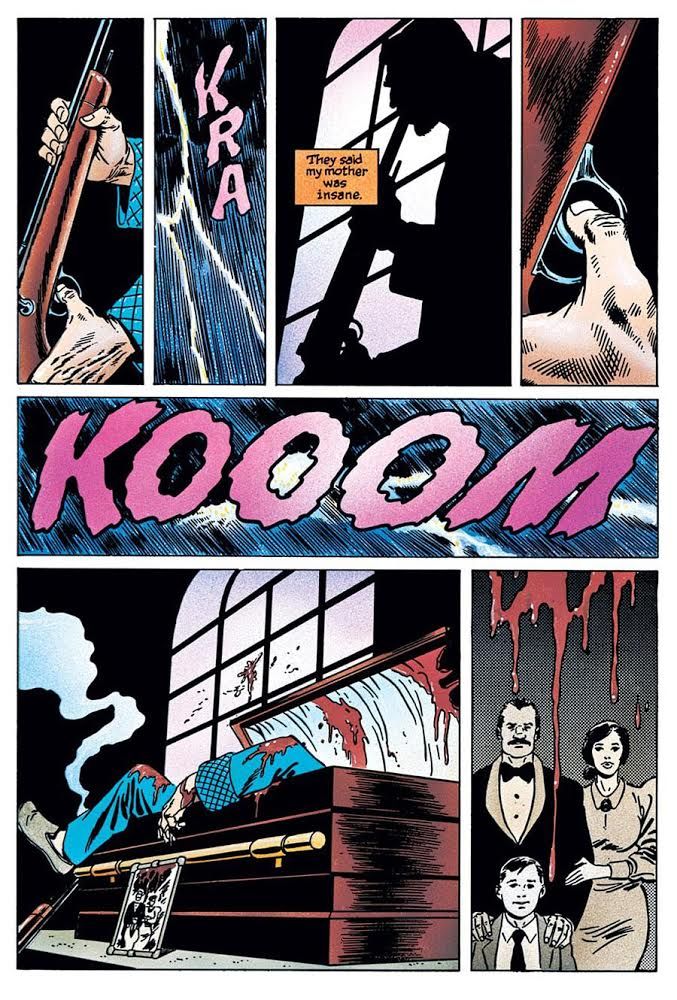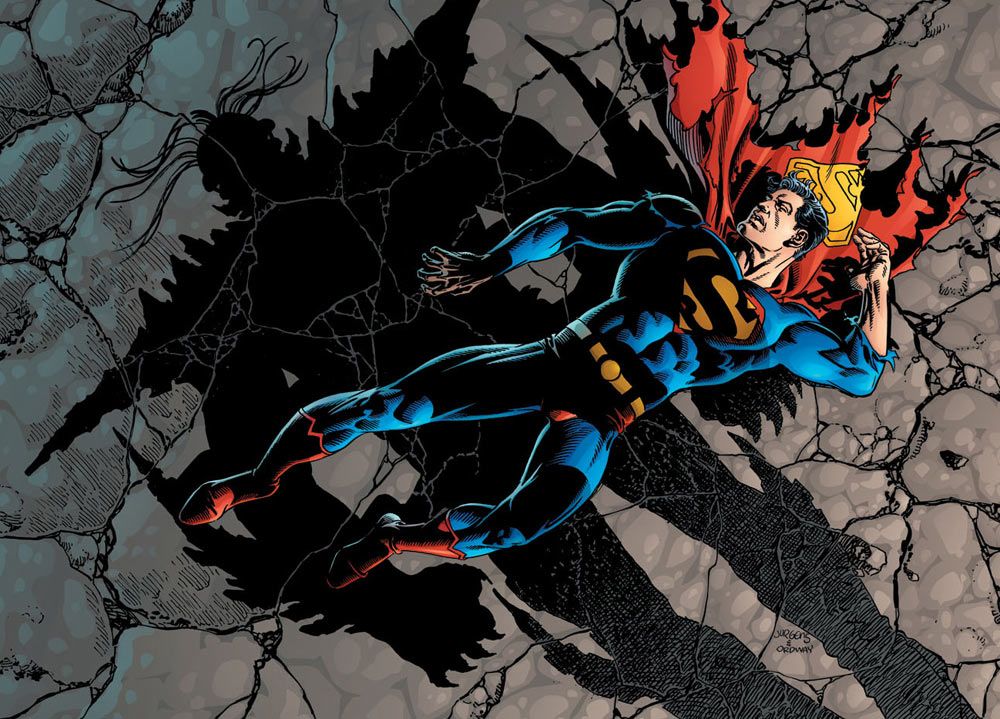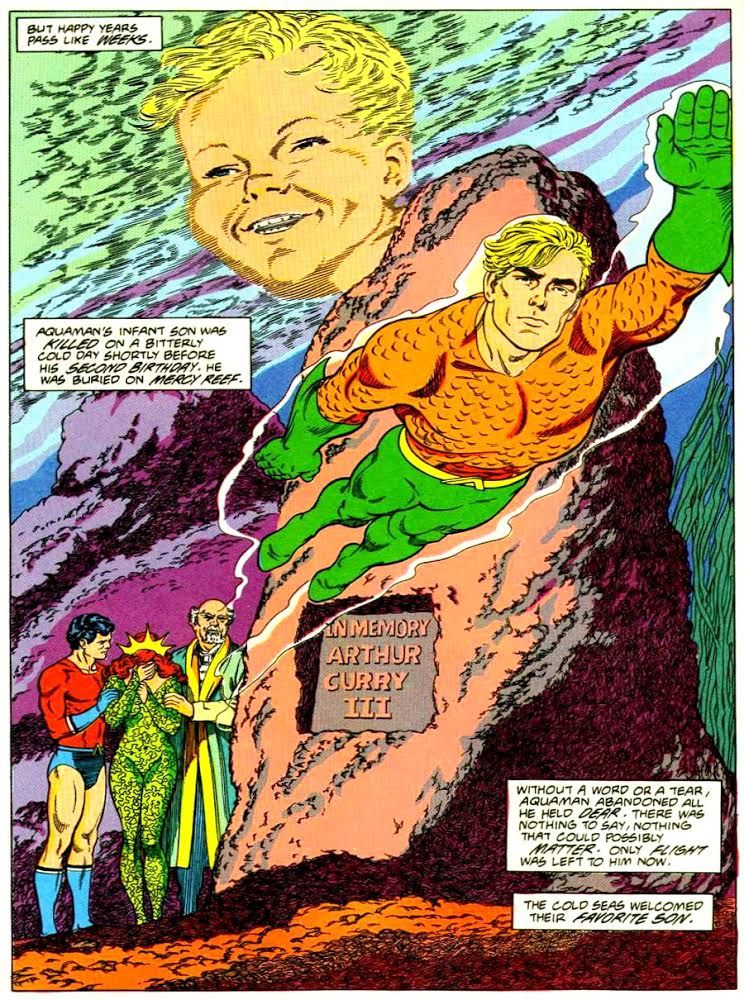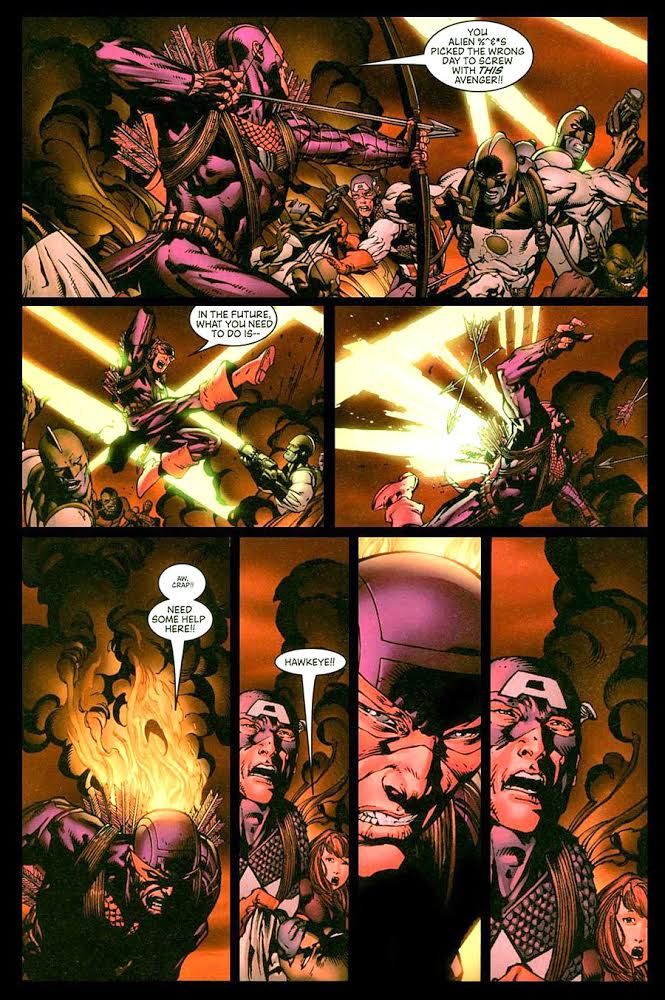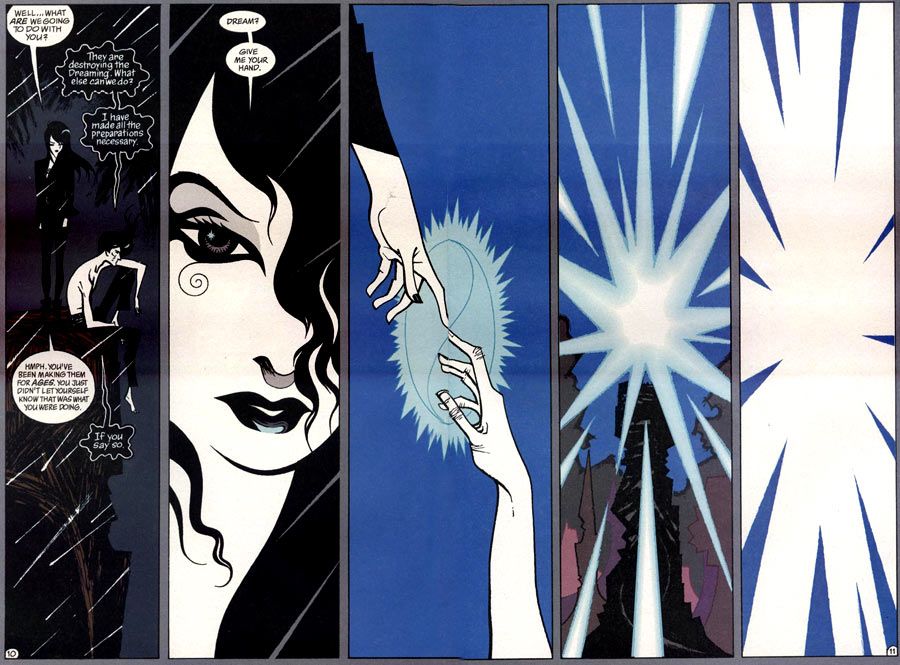They say the only things you can count on are death and taxes, though that's a little less true in comics, with characters seemingly dying and being resurrected faster than new ones can be created. When we ran our first list of the most memorable and shocking deaths in comics, we knew we might have missed a few, and now -- based on suggestions from the CBR Community -- we present more heroes and villains who have shuffled off this mortal coil in fashions no one will soon forget.
RELATED: The Most Memorable & Shocking Comic Book Deaths
While many, though not all, of these characters have since returned to the world of the living, the impact of their deaths continues to resonate in the lives of the characters and creators they touched. These are the characters whose death left their marks on fans everywhere, and despite the somewhat transient nature of comic book death in the eyes of readers, these demises still have meaning on the narrative of the characters. So grab your mourning veils and join us on another trip to the afterlife as we pay tribute to those we have lost -- at least for a little while.
Captain Marvel
"The Death of Captain Marvel" Marvel Graphic Novel Vol 1 #1 (1982) by Jim Starlin
Marvel Comics tried for years to find a consistent direction for its Kree space adventurer, the hero known as Captain Marvel. While Mar-Vell enjoyed memorable adventures, particularly the years he spent bonded to perennial supporting character Rick Jones and the cosmic epics penned by Jim Starlin, he always seemed like an afterthought. With his death, he transitioned from second stringer to legend. While most heroes die in battle, Captain Marvel quietly died from the most insidious foe of all -- cancer. The spacefaring hero was laid low by an illness that touches the lives of so many. The dignity and acceptance with which Captain Marvel died instilled the hero's legacy into the very foundations of the Marvel Universe. He may have been an alien hero, but Marvel died the most human and dignified of deaths, surrounded by other Marvel Universe heroes who found themselves powerless to help their comrade. In death, the Captain's legacy has endured, with Carol Danvers currently honoring the Marvel name, and her legacy in turn inspiring Marvel's newest superstar Kamala Khan, AKA Ms. Marvel.
Maxwell Lord
"Wonder Woman" #219 (2005) by Greg Rucka, Tom Derenick, Georges Jeanty, Karl Kerschl, David Lopez and Rags Morales
Maxwell Lord earned a mention on our last list for killing Blue Beetle Ted Kord, but Lord's death -- and who killed him -- may have sent even larger ripples through the DCU. Lord proved just how dangerous he was by mind controlling Superman, causing the Man of Steel to go mad and nearly kill Wonder Woman and Batman. Wonder Woman was barely able to stop Superman and free her friend from Lord's control. In his arrogance, Lord warned Diana what would happen if he ever gained control of Superman again, and under the influence of Diana's Lasso of Truth he convinced her the only way Superman could remain free was for Lord to die. Faced with no other options, Wonder Woman put aside the hero and embraced the warrior within, snapping Maxwell Lord's neck. The image of Wonder Woman committing such a brutal act of violence was burned into fans' minds, giving the impression that things would never be the same for her or the DCU. "Infinite Crisis" soon followed, leading to an age of distrust between DC's trinity of Wonder Woman, Superman and Batman. Lord was an enduring character stretching back to the Justice League International days, one fans laughed with and remembered fondly, but with his murder, one of the greatest heroes of the DC Universe suffered a major blow to her ideals.
Terra
"Tales of the Teen Titans Annual" #3 (1984) by Marv Wolfman and George Perez
Terra's betrayal of the Teen Titans was one of the most shocking moments in Wolfman and Perez's legendary run -- even though it probably shouldn't have been. To the Titans, Terra was the team's Mary Sue, their precocious up-and-comer with romantic links to Changeling and a bright future as a major hero in the DC Universe. However, the half-sister of Geo-Force was anything but -- as Deathstroke the Terminator's undercover agent in the Titans, she fed the mercenary vital information about how to defeat the team, slowly sewing seeds of corruption and discord in the Titans' ranks. A psychotic, jealous, power mad teen driven by rage, Terra would show her true colors to the team by the end of "The Judas Contract." Terra turned on the Titans for Deathstroke, but when he showed loyalty and affection for his own son Joey, Terra went on an Earth-shaking rampage. With the Titans powerless to stop her, Terra's fury was finally snuffed out by her own rage-driven powers as she was buried underneath tons of rocks and earth. This death profoundly changed Changeling and Deathstroke, as well as signaling that the innocent era of the teen sidekick was over.
James Hudson/Guardian
"Alpha Flight" #12 (1984) by John Byrne
In 1984, John Byrne's "Alpha Flight" was at the top of the sales chart. Amazingly, a throwaway concept introduced in the pages of "X-Men" had become a majorly popular Marvel title, and few suspected given the newfound success that Byrne would kill James Hudson, the face of the team, one year into the run. Hudson was the first member of Alpha Flight readers met and he and his wife Heather were responsible for helping Wolverine become the hero readers know and love. He was a nurturing and brave leader cut from the cloth of Captain America, and one of the book's central dynamics was his relationship with his wife. During a conflict with the evil Omega Flight, Guardian's battle suit was breached. Much like readers, Hudson's teammates were shocked as the Guardian suit exploded, taking Hudson's life along with it. The team's leader and anchor to the rest of the Marvel Universe was gone, forcing the fractured team to fend for themselves. Guardian's death fueled all the Alpha Flight stories that followed. Heather took up her husband's place as team leader and the remaining members were forced to find their own way without the man that united them. Hudson would return and die again (twice), but the defender of the North's first death stands out as a moment where Marvel fans realized Alpha Flight was anything but conventional.
Proty 1
"Adventure Comics" #312 (1963) by Edmond Hamilton and Curt Swan
Proty was an adorable blob of sentient protoplasm that hung out with the Legion of Super Heroes in the team's earliest days. Proty possessed the same powers as Chameleon Boy and the shape-shifting Legionnaire took the cute little piece of malleability as a pet. He injected fun and good humor to Legion proceedings and even became a member in good standing of the Legion of Super-Pets. Proti's role in the book and innocent nature made it all the more surprising when he was killed off. Months earlier, DC surprised readers when Lightning Lad, a founding member of the Legion, was killed in action. Mon-El found a way to revive him, using special lightning attracting rods to kickstart the lightning-fueled hero by transferring the holder of the rod's life force into Lightning Lad's corpse. Sadly, whoever held the rod, even Superboy, would be killed in the process of the resurrection. When Proty learned Saturn Girl planned to rig her rod to to attract the lightning, Proty made the ultimate sacrifice. After luring her to a cave and trapping her inside, Proty assumed Saturn Girl's form and took her place at the lightning rod ceremony. He held the doctored rod and bravely gave his own life so both Lightning Lad and Saturn Girl could live. To see a pet die amongst the innocence of the Silver Age was a staggering moment for readers, and Proty's death was not soon forgotten. While a Proty II later joined the team, the original's loss marks him as the bravest blob in comics.
Thunderbird
"X-Men" #95 (1975) by Chris Claremont and Dave Cockrum
Nothing significant could happen in a comic featuring the Ani-Men, right? Wrong, as the second regular issue starring the all-new, international team of X-Men proved. During their mission to take down Count Nefaria and the Ani-Men, the newly formed X-Men lost one of their own as James Proudstar, the Native America mutant known as Thunderbird, died trying to bring down the plane ferrying Neferia. Killed before fans really got a chance to know him, Professor X was psychically linked to the hero when he died and felt every agonizing second of Thunderbird's demise for months. This profoundly changed the way Xavier commanded his new team and also signaled to readers no one was safe in this new world of mutant mayhem. If a member could die in the team's third appearance, what would the future hold? Thunderbird's brother Warpath was introduced years later, and he used a desire to honor his fallen brother to become an important member of both the X-Men and X-Force. While fans barely knew Thunderbird when he died, his death helped set the tone for a generation of X-Men stories.
John Hartigan
"Sin City: That Yellow Bastard" #6 (1995) by Frank Miller
Who could forget the moment John Hartigan pulled the trigger? Hartigan was a good cop, one of very few in Sin City. He lived to take care of Nancy Callahan, a woman he once saved from the rapist son of the corrupt Senator Roark. Hartigan brutalized Roark Junior, damaging his kidneys and transforming the already ghoulish killer into a yellow bastard out for revenge. Hartigan was framed for Nancy's abduction but he spent his days content in prison knowing Nancy was okay. Years later, the Yellow Bastard threatened the adult Nancy, now a stripper, and Hartigan was again tasked with saving her. Hartigan was the most pure protagonist in Frank Miller's "Sin City," a cop who selflessly lost everything to protect a young girl. He found the gumption and the courage to save Nancy one more time and kill the Bastard, beating the monstrous predator to death. All was well, Nancy was safe, and Hartigan was victorious after decades. But Senator Roark could never let go of his son's murder. Hartigan made one more sacrifice to keep Nancy safe, taking his own life in a minimalist, double-page spread that seared into readers forever. It was unfair, unjust and painful, but it was also unforgettable. Hartigan allowed himself to be swallowed by Sin City's corruption to keep Nancy from drowning with him. In the words of Hartigan, "Fair trade."
Ellen, Cliff and Maxine Baker
"Animal Man" #19 (1990) by Grant Morrison and Charles Truog
One of the most experimental and daring titles of the late '80s and early '90s was Grant Morrison's surreal run on "Animal Man." Once an almost forgotten hero (he actually was on a team called The Forgotten Heroes), Animal Man rose to narrative glory under Morrison's pen, showing the world a very different kind of super hero in an adult-oriented, pre-Vertigo "Animal Man" series. Animal Man's world centered on his family, his wife Ellen, his son Cliff and his precious daughter Maxine. The story of a super hero trying to balance his responsibilities as a father and husband with the greater DCU was a rarity in comics. While Buddy Baker's adventures could be tense, his home life provided a safe haven. Animal Man's fortress of solitude was a suburban home and the arms of his loving family. Around the fateful issue #19, Buddy joined the Justice League Europe and had one of the team's famous teleporters installed in his home. When Mirror Master used the teleporter to invade the Baker home and murder Animal Man's wife and children, fans didn't know what hit them. Buddy's reason for being was torn from him, giving readers the story of a father with no children and a loving, devoted husband with no wife. The character would never be the same, nor would his world as the most famous issues in the character's history were to follow. Baker's quest to revive his family brought him face to face with the man who truly killed them. No, not Mirror Master -- the book's writer, Grant Morrison, who admits to his creation that his family was killed for shock value. The meta-fictional adventure became the most talked about moment in Animal Man history, and the fictional Morrison returned Buddy's family to life, giving his hero a happy ending. Even with order restored, the site of Buddy's wife and child as corpses remains haunting.
Iris West Allen
"The Flash" #275 (1979) by Cary Bates and Alex Saviuk
Iris West Allen was the most importing supporting character to Barry Allen since his introduction in 1956's "Showcase" #4. Initially filling the Lois Lane role as an investigative reporter, as the years went on Iris became Barry's heart and soul and a mother figure for her nephew Wally, also known as Kid Flash. She was the bright center of the Flash's universe, making it all the more shocking when she was murdered out on nowhere. "The Flash" #275 was a gimmicky issue with Barry attending a costume party. Characters dressed like DC's mightiest heroes filled the issue with gags, including a sweet moment where Hal Jordan came to the party dressed like Green Lantern to congratulate Iris and Barry on the decision to start a family. The joy would not last, as escaped murderer Clive Yorkin was also in attendance. As Barry was hit with a wave of nausea, Iris left to get him water and seconds later, a scream rang out. Barry ran to the rescue, finding Yorkin standing over the body of his murdered wife. Fans must not have known what hit them, as Iris was taken just footsteps away from the Fastest Man Alive. Barry spent many issues mourning Iris, leading to a conflict with the Justice League and a darkening of the character. As it turns out, Professor Zoom, the Reverse-Flash, was actually responsible for Iris' death. The murder later fueled "The Trial of the Flash" arc as Barry murdered Zoom in order to save the life of his second wife on their wedding day. "The Trial" culminated in Barry discovering Iris was alive in the future. Barry happily lived with his one true love until the "Crisis on Infinite Earths," an event that saw Barry sacrifice his own life.
Kraven the Hunter
"Amazing Spider-Man" #294 (1987) by J.M. DeMatteis and Mike Zeck
An egoist who fashioned himself the world's most dangerous predator, Kraven the Hunter had long been been one of Spider-Man's deadliest foes. "Kraven's Last Hunt" is a seminal Spidey tale, one that opened with the hunter firing a shotgun blast into Peter Parker from point blank range and replacing him on the streets of New York. Kraven did not kill Spider-Man; instead, the vicious hunter drugged the hero and buried him alive. Kraven wanted to become the spider to prove he was better than the enemy he had pursued for so long. To this point, Spider-Man stories were usually comedic affairs with only the occasional dip into grim and gritty. "Kraven's Last Hunt" was something altogether different, and fans were in for one final shock. After escaping his grave, Peter Parker confronted Kraven who promised him their conflict was over since he had sufficient proved himself and negated Spider-Man as a threat. With nothing left to prove, Kraven placed the barrel of a shotgun in his mouth and pulled the trigger. At this time, mainstream readers were never forced to endure such an unflinching portrayal of suicide, much less that of a character who had been around for decades. The moment darkened the world of Spider-Man for years to come as many creators tried to match the tonality of DeMatteis and Zeck's unforgettable story. Kraven would later return (of course), but the image of the hunter suckling the barrel of his signature rifle is just as shocking today as it was in 1987.
Superman
"Superman" #75 (1993) by Dan Jurgens
Since fans knew it was coming, "The Death of Superman" cannot be called shocking, but the weeks and months following Superman's death at the hands of Doomsday were certainly memorable. The Man of Steel sacrificed everything to stop Doomsday's rampage, and his death was just the beginning of one of the bestselling storylines of all time, giving rise to the "Reign of Supermen," in which four replacement heroes tried to fill the heroic void. Superman's death at the fists of Doomsday was a relatively simplistic tale, but the story threads that grew from it had an impact on the DCU long after Superman's inevitable resurrection. Comic shops felt the death in the most positive way, with record sales for the polybagged death issue, though many over-ordered the issue and still have long boxes of it to this day. Superman would eventually return, but his death and the hype surrounding it set a precedent for highly marketable storylines cashing in on a character's temporary demise.
Arthur Curry, Jr.
"Adventure Comics" #452 (1977) by David Michelinie and Jim Aparo
Thus far our countdowns have featured heroes, villains, significant others and cosmic entities -- but no one would kill a baby, right? Poor little Arthur Curry, Jr., the infant son of Aquaman and Mera, was murdered by his father's arch nemesis, Black Manta, in 1977. That's right, Aquababy's death predates the grim and gritty '80s and the increasingly violent modern era, his death landing in the middle of the Bronze Age. Readers who grabbed a copy of "Adventure Comics" #452 for its cool Jim Aparo cover featuring Aquaman fighting his sidekick Aqualad were likely shocked to find the sea king's infant son slowly suffocated in an air bubble within its pages. Black Manta trapped Aquababy in said bubble and forced Aquaman and Aqualad to fight, offering to free Arthur, Jr. only when one of them died. Though Aquaman nearly fought his sidekick and surrogate son to the death, Black Manta was defeated thanks to some quick thinking by the sea king -- unfortunately, it was too late, as Arthur Curry, Jr. suffocated in his bubble prison. The future for Aquaman, already a tough sell for DC at the time, became a bleak and ponderous tragedy as Arthur's relationship with Aqualad was soured and Mera divorced him. Aquaman began to swim alone, forever mourning his son, crafting a harsh and memorable path for a character readers often dismiss as a joke.
Hawkeye
"Avengers" #502 (2004) by Brian Michael Bendis and David Finch
Hawkeye's death proved memorable because of the mundane manner in which it occurred, not to mention the character renaissance that followed. There was little buzz surrounding the character when Brian Michael Bendis took over "Avengers" with "Avengers Disassembled." During an assault by the Kree, Clint Barton's quiver was hit by a stray blast, igniting his explosive arrows. Knowing he was about to blow, Hawkeye used his jet pack to fly into a Kree warship's engine, sacrificing himself so no one else would be hurt. Fandom was shocked and enraged at the way the longtime Avenger was casually tossed aside. When he finally returned in Bendis' "House of M" miniseries, fans breathed a palpable sigh of relief and the character has since risen to his greatest heights with an award-winning ongoing series by Matt Fraction and David Aja and a series of appearances in Marvel Studios films. Death usually marks an ending, but for Hawkeye it marked a brand new beginning.
Morpheus
"Sandman" #69 (1999) by Neil Gaiman and Marc Hempel
The death of Morpheus the Sandman, the manifestation of dream, took no one by surprise. After all, Neil Gaiman foreshadowed Sandman's death almost from the beginning of the series that redefined dark fantasy in graphic fiction. Still, when Morpheus was destroyed by the Kindly Ones, the moment would stay with fans that had fallen in love with Gaiman's lush prose and unforgettable imagery forever. Morpheus' tale unfolded across 69 issues, a long form journey through life and death, fantasy and reality. With Dream's death, it was clear that Gaiman's story was coming to an end and that fans had witnessed arguably the greatest long term comic series of all time would soon wake up because the dream was over. By slaying his own son Orpheus, Morpheus' sin awoke the Kindly Ones who demanded the debt be paid in blood. A new white clad Dream arose with Daniel, who took his place among the Endless, but Morpheus' death provided a fitting ending for the weaver of stories and endings.

